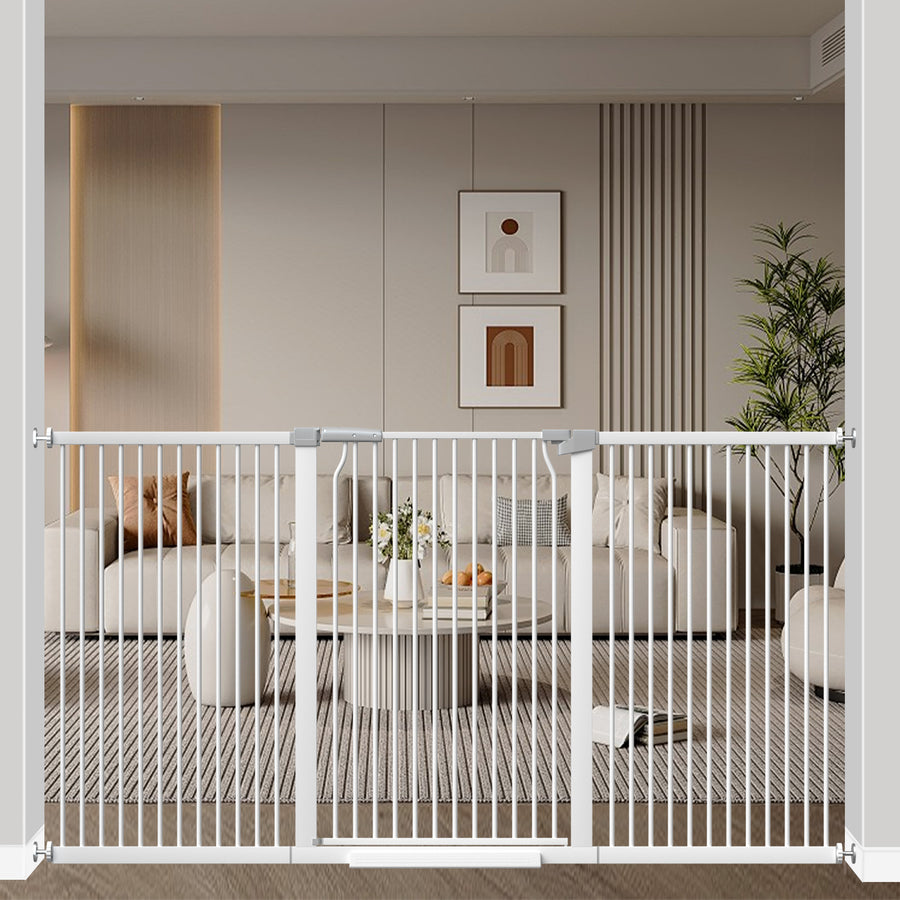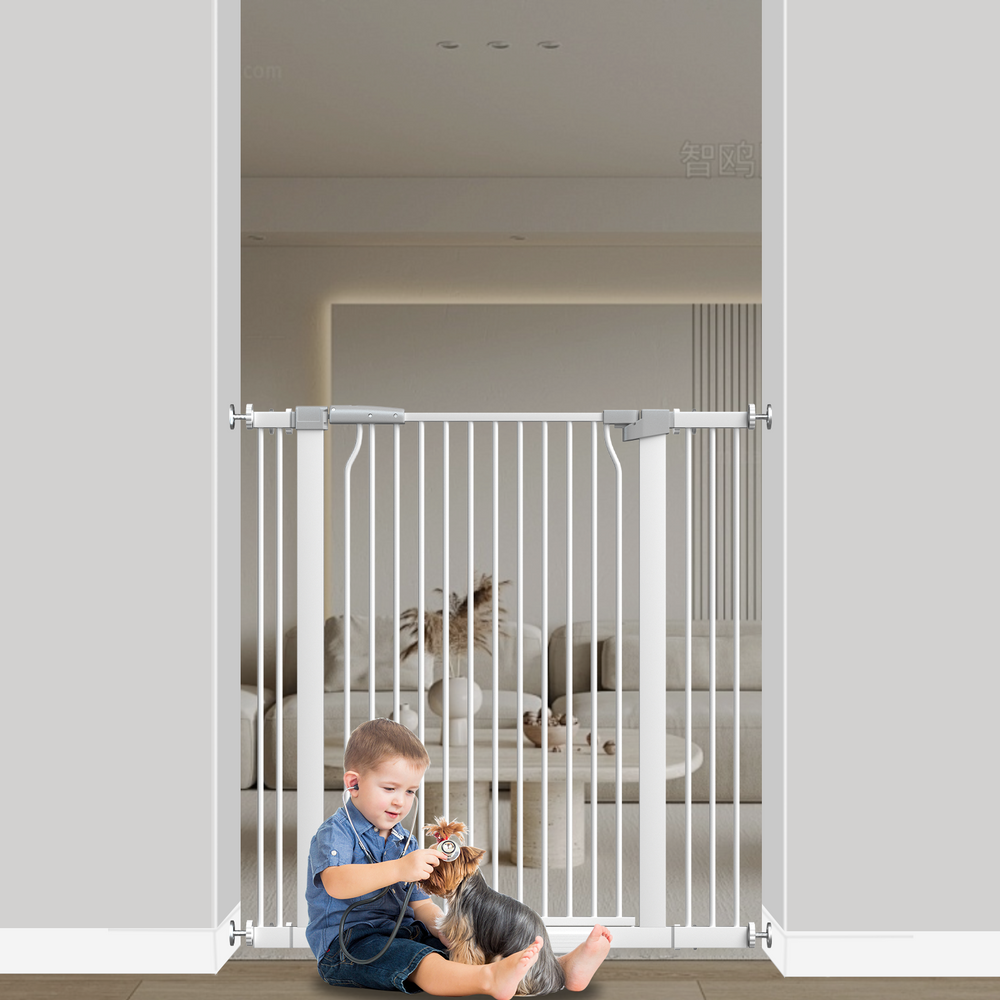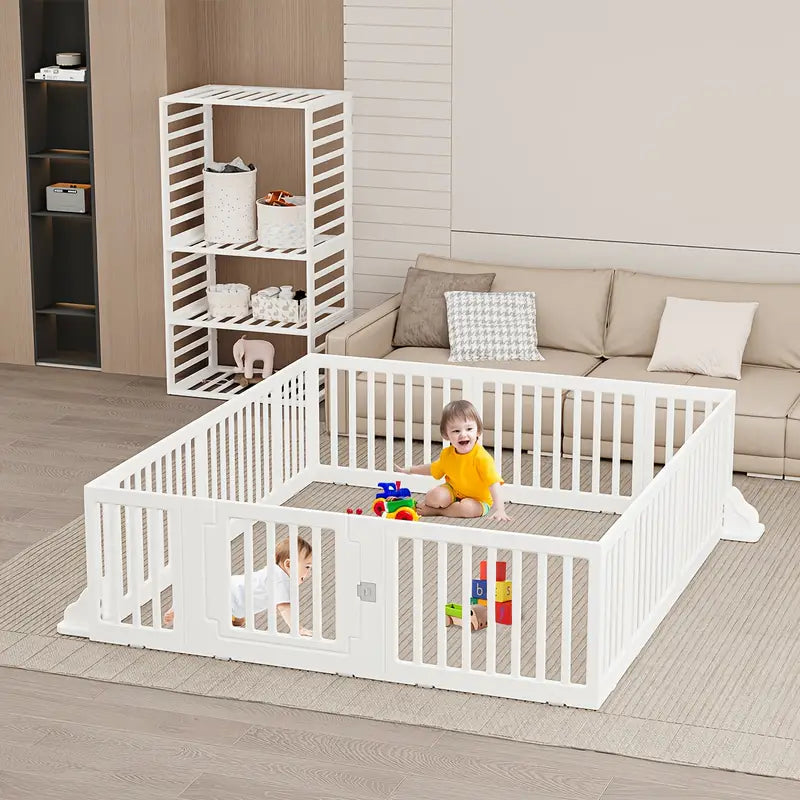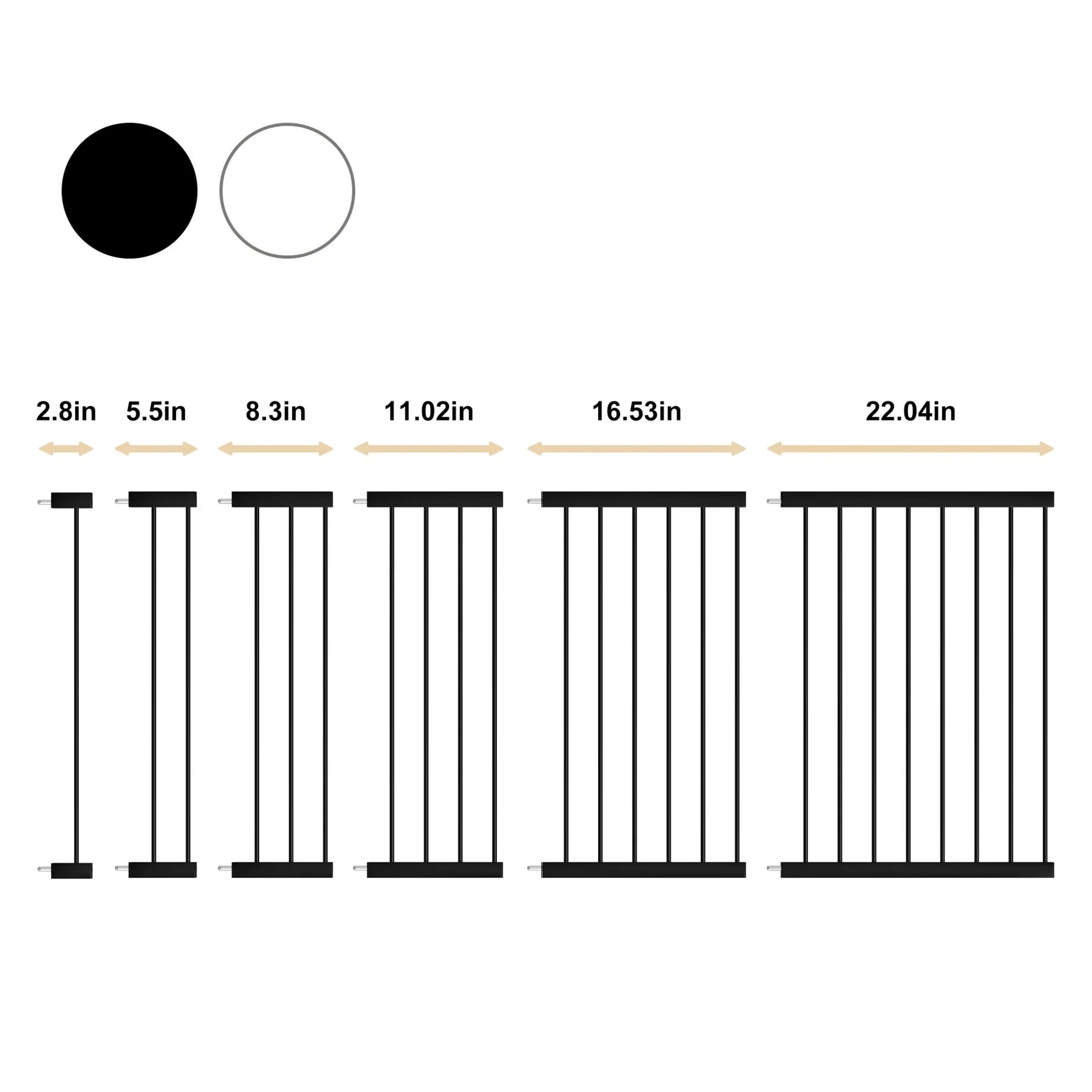Essential Newborn Home Safety Checklist: Ensure Your Baby's Safety from Day One
Bringing a newborn home is an exciting time, but it also comes with a lot of responsibility. One of the most important things you can do is ensure your home is a safe space for your little one. This newborn home safety checklist will help you identify potential hazards and take the necessary steps to protect your baby from day one. From safe sleep practices to baby-proofing each room, having a plan in place will give you peace of mind as you welcome your new addition.
Key Takeaways
- Establish safe sleep habits to reduce the risk of SIDS.
- Baby-proof each room to prevent accidents as your baby starts to crawl and walk.
- Keep emergency contact numbers accessible and have a first aid kit ready.
- Regularly check and maintain safety equipment like smoke detectors and baby gates.
- Introduce pets to your newborn carefully and set clear boundaries.
Newborn Home Safety Checklist
Safe Sleep Practices
Setting up a safe sleep environment is super important from day one. Always place your baby on their back to sleep, whether it's for a nap or bedtime. This reduces the risk of SIDS. Make sure the crib or bassinet has a firm mattress and fits snugly. Avoid soft bedding like pillows, blankets, and bumpers, as these can pose a suffocation risk. Keep the sleep area free of toys and other objects. It's also a good idea to keep the crib away from windows with cords.
It's recommended to share a room with your baby for the first six months, but not the same bed. This can help you monitor your baby more closely.
First Aid Essentials
Having a well-stocked first aid kit is a must. Include a digital thermometer, infant acetaminophen or ibuprofen (check with your pediatrician for dosage), a nasal aspirator, and antiseptic wipes. Keep a list of emergency numbers handy – poison control, your pediatrician, and the local hospital. It's also smart to take a CPR class for infants and children. Make sure everyone who cares for your baby knows where the first aid kit is located and how to use it.
Here's a quick list of essentials:
- Digital thermometer
- Infant pain reliever
- Nasal aspirator
- Antiseptic wipes
Fire Safety Measures
Fire safety is something you really can't skip. Install smoke detectors on every level of your home and inside each bedroom. Test them monthly and change the batteries at least once a year. Consider having a fire extinguisher on hand, especially in the kitchen. Develop a fire escape plan and practice it with your family. Make sure everyone knows two ways out of each room. Keep flammable materials away from heat sources. It's also a good idea to check your carbon monoxide alarms to ensure they are working properly.
Room-By-Room Baby-Proofing Guide
Baby's Room Safety Tips
Okay, let's talk about the baby's room. This is ground zero for safety. We're talking cribs, changing tables, and all that jazz. Make sure the crib meets current safety standards – no drop-side cribs, please! And those cute mobiles? They're adorable, but move them out of baby's reach once they can sit up. You don't want them pulling it down on themselves.
- Anchor furniture to the walls. Seriously, dressers can tip over, and it's not worth the risk.
- Keep cords from blinds and curtains out of reach. Cordless options are even better.
- Check the temperature. You want it comfy, not too hot, not too cold. Around 68-72°F (20-22°C) is usually good.
It's easy to get caught up in making the nursery look perfect, but safety trumps style every time. Think about it from a baby's perspective – what can they reach, pull, or put in their mouth?
Bathroom Safety Precautions
The bathroom? A surprising danger zone. Slippery surfaces, medications, and cleaning supplies – it's a recipe for disaster if you're not careful.
- Never leave a baby unattended in the bath, not even for a second. Seriously, not even a second.
- Install toilet locks. Babies are curious, and toilets are... well, not clean.
- Store medications and cleaning supplies up high and locked away. Think beyond just reach; think about climbing.
Kitchen Hazard Management
The kitchen is full of potential dangers. Hot stoves, sharp knives, cleaning supplies – you name it. It's important to take steps to minimize the risks. Think about installing cabinet locks and drawer latches to keep little hands out of trouble.
- Keep knives and sharp objects in locked drawers or high up.
- Use stove knob covers to prevent accidental turning on.
- Never hold a hot drink while holding your baby.
The kitchen can be a tough room to fully baby-proof, but focus on the biggest risks first. Things like stove safety and chemical storage are non-negotiable.
Essential Safety Equipment
Smoke Detectors and Alarms
Okay, so smoke detectors? Not exactly the most thrilling purchase, but definitely up there on the importance scale. Make sure you've got them installed on every level of your house, especially near bedrooms. I'm not kidding, check those batteries regularly. Like, put it on your calendar. It's easy to forget, and a chirping detector is annoying, but a silent one in a fire? Terrifying.
- Test smoke detectors monthly.
- Replace batteries at least once a year (or when the detector indicates low battery).
- Consider interconnected smoke detectors – when one sounds, they all sound.
It's also a good idea to have a carbon monoxide detector. Carbon monoxide is odorless and deadly, so you won't even know it's there until it's too late. Seriously, get one. It's a small price to pay for peace of mind.
Baby Gates and Safety Locks
Once your little one starts crawling, it's game on. Baby gates become your best friend. Stairs? Gate. Kitchen? Gate. Anywhere you don't want them exploring unsupervised? You guessed it, gate. And don't forget those safety locks for cabinets and drawers. Trust me, babies are like tiny, determined burglars. They will get into everything. Think about newborn essentials and how to keep them away from your baby.
- Install baby gates at the top and bottom of stairs.
- Use safety locks on cabinets and drawers containing cleaning supplies, medications, or sharp objects.
- Consider adjustable gates that can fit a variety of openings.
First Aid Kit Essentials
Having a well-stocked first aid kit is a must. You don't need to be a doctor, but you should have the basics on hand for minor bumps, scrapes, and fevers. Think bandages, antiseptic wipes, a thermometer, and some pain relief medication (appropriate for babies, of course!). Keep it somewhere accessible, but out of reach of little hands. Here's a quick list:
- Adhesive bandages (various sizes)
- Antiseptic wipes
- Infant thermometer
- Pain relief medication (acetaminophen or ibuprofen, age-appropriate)
Preventing Common Hazards
Choking Prevention Strategies
Choking is a serious concern for infants, as they explore the world by putting things in their mouths. Always be vigilant about potential choking hazards. Here's what I do:
- Ensure small objects like buttons, coins, and small toys are kept out of reach. I check under the couch and behind furniture regularly.
- When your baby starts eating solids, cut their food into very small, manageable pieces. I avoid giving my little one whole grapes, nuts, or popcorn.
- Supervise your baby closely during meals and playtime. Never leave them unattended while they're eating.
It's a good idea for all caregivers to learn infant-specific first aid, including how to respond to a choking emergency. Knowing what to do can save a life.
Fall Prevention Techniques
Falls are another common hazard, especially as babies become more mobile. To prevent falls:
- Never leave your baby unattended on elevated surfaces like changing tables or beds. Even a quick turn can be dangerous.
- Install safety gates at the top and bottom of staircases. Make sure they're securely installed and easy for adults to operate but difficult for children.
- Use non-slip mats in the bathroom and other areas where the floor might be slippery. I also make sure to wipe up any spills immediately.
Water Safety Guidelines
Water can be dangerous for infants, even in small amounts. Here are some water safety tips:
- Always supervise your baby closely during bath time. Never leave them alone, even for a second.
- Check the water temperature before placing your baby in the bath. It should be warm, not hot. A good way to check is with a bath thermometer.
- Empty the bathtub immediately after use. Don't leave any standing water that a child could access.
Remember, constant supervision is key to preventing accidents. No amount of safety equipment can replace your watchful eye.
Preparing for Pet Interactions

Bringing a newborn home is a huge adjustment for everyone, including your furry friends. They've been the center of your world, and now there's a new, tiny human demanding attention. It's important to prepare your pets for this change to ensure a safe and harmonious environment for everyone. It's not just about the baby's safety; it's also about your pet's well-being.
Introducing Pets to Newborns
The first introduction is key. Don't just plop the baby down and expect your pet to understand. Before the baby even comes home, send home a blanket or piece of clothing with the baby's scent. Let your pet sniff it and get used to the new smell. This helps them associate the scent with something familiar – you. When you bring the baby home, have someone else hold the baby while you greet your pet. This way, you can give them attention and reassure them that they are still loved. Allow them to sniff the baby from a safe distance, always under your supervision. Keep the interactions short and positive.
Establishing Safe Boundaries
Boundaries are crucial for a smooth transition. The nursery should initially be off-limits to your pets. This gives the baby a safe space and prevents any accidental injuries. If you have a cat, consider using netting over the crib to prevent them from jumping in. Gradually introduce your pet to the nursery under supervision. Teach your pet basic commands like "leave it" and "stay" to help control their behavior around the baby. Never leave your pet and baby unsupervised in the same room, especially in the early days.
Monitoring Interactions
Constant supervision is non-negotiable. Even if your pet has always been gentle, their behavior can change when a new baby arrives. Watch for signs of stress or jealousy, such as excessive barking, hissing, or hiding. If you notice any concerning behaviors, consult with a veterinarian or a professional dog trainer. As your child grows, teach them how to interact with the pet respectfully. This includes not pulling their tail, bothering them while they're eating, or climbing on them. Remember, it's a two-way street – both the baby and the pet need to learn how to coexist peacefully.
It's easy to get caught up in the excitement of a new baby, but don't forget about your pets. Maintaining their routine as much as possible will help them feel secure and loved. This includes regular walks, playtime, and feeding schedules. A happy and secure pet is less likely to exhibit behavioral problems around the baby.
Maintaining a Safe Environment

It's easy to set up all the safety measures and then just...forget about them. But regular maintenance and updates are key to keeping your baby safe as they grow and change.
Regular Safety Inspections
Think of it like this: your house needs a checkup just like your baby does! Walk through each room, looking for potential hazards that might have developed over time. Are outlet covers still securely in place? Are blind cords still out of reach? Is furniture still anchored to the walls? It's easy for things to shift or loosen, so a regular inspection is a must. I try to do this monthly, but even quarterly is better than nothing.
Updating Safety Measures
Babies grow fast, and what worked last month might not work this month. As your baby becomes more mobile, you'll need to adjust your safety measures. For example, a baby gate that was fine when they were crawling might not be tall enough when they start pulling themselves up. Keep an eye on their development and update your safety measures accordingly. Also, don't forget to check for recalls on baby equipment! Sign up for email alerts from the Consumer Product Safety Commission to stay informed.
Emergency Preparedness
It's something no one wants to think about, but being prepared for an emergency is crucial. Make sure you have working smoke detectors and carbon monoxide detectors on every level of your home. Keep a well-stocked first aid kit handy, and make sure everyone in the family knows where it is. Post emergency phone numbers (including poison control) in a visible location. And, most importantly, have a plan. Practice fire drills and discuss what to do in different emergency situations. It might seem like overkill, but it could save a life.
Having a plan and practicing it can make a huge difference in how you react during a crisis. It's not about scaring yourself; it's about empowering yourself to handle whatever comes your way.
Wrapping Up Your Baby's Safety Journey
Getting your home ready for your newborn is a big deal. You want to make sure everything is safe before they arrive. Remember, babies grow fast, and soon enough, they'll be crawling and exploring. So, it’s smart to keep checking for new hazards as they grow. Use this checklist to stay on top of things. By taking these steps, you’re not just baby-proofing your home; you’re creating a safe space for your little one to learn and play. It’s all about peace of mind for you and a secure environment for them. So, take a deep breath, check off those boxes, and enjoy this exciting new chapter!
Frequently Asked Questions
What are safe sleep practices for newborns?
Always place your baby on their back to sleep in a crib or bassinet with a firm mattress. Avoid using blankets, pillows, or toys in the crib to reduce the risk of suffocation.
What should I include in a first aid kit for my baby?
Your baby’s first aid kit should have a thermometer, nasal aspirator, infant pain reliever, and emergency contact numbers.
How can I ensure fire safety in my home?
Install smoke detectors in every room and check the batteries regularly. Have a fire extinguisher on hand and make sure everyone knows the escape plan.
What are some common choking hazards for infants?
Small toys, food like grapes or nuts, and any small objects should be kept away from your baby to prevent choking.
How can I make my kitchen safe for my baby?
Keep cleaning products locked away, use safety straps on high chairs, and ensure hot items are out of reach.
What should I do to prepare my pets for the arrival of a newborn?
Introduce your pet to your baby's scent before they come home and set boundaries to keep the nursery safe.






Leave a comment